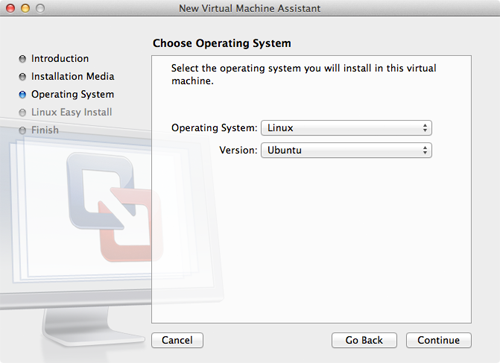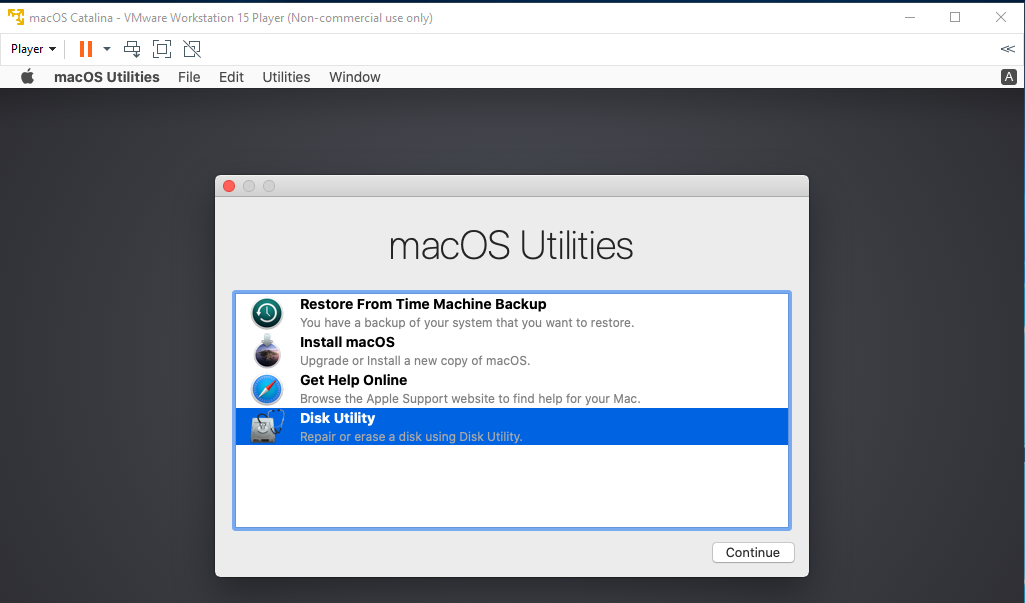

- #INSTALLATION DISK FOR VMWARE ON MAC HOW TO#
- #INSTALLATION DISK FOR VMWARE ON MAC MAC OS X#
- #INSTALLATION DISK FOR VMWARE ON MAC INSTALL#
- #INSTALLATION DISK FOR VMWARE ON MAC ZIP FILE#
- #INSTALLATION DISK FOR VMWARE ON MAC UPDATE#
Type the name of the system you will install on the virtual machine and if you want to change the installation location, you can specify the location on an external disk via the Browse button.
#INSTALLATION DISK FOR VMWARE ON MAC MAC OS X#
In addition, VMware Tools (Darwin.iso) will start to download, allowing you to use the Apple operating system more efficiently on your host.Īfter unlocking macOS, you can see that this time Apple Mac OS X support is enabled in the guest operating system selection window.Īfter selecting the Apple Mac OS X platform, select macOS 11.1 in the Version section and click Next.
#INSTALLATION DISK FOR VMWARE ON MAC ZIP FILE#
In this window, click the Cancel button to close the virtual machine creation wizard and then close your VMware Workstation program completely.ĭownload VMware Unlocker to your computer, and then extract the zip file to the folder and run the win-install.cmd file in the folder as an administrator.Īfter running the Unlocker tool, some files of the VMware program will be automatically organized and backed up. So you need to enable macOS support with Unlocker. When you try to install macOS on the virtual machine, you will see that there is no support for Apple Mac OS X systems. In the Select a Guest Operating System window, you can select the operating systems of Microsoft Windows, Linux, ESX, or other platforms, but you will see that there is no Apple Mac OS X here. This process may not be suitable for installation, so select I will install the operating system later and continue configuring the settings manually. When you add the ISO file to the virtual machine at this stage, the type and settings of the macOS virtual machine will be automatically determined by the image you add. To install with your host’s physical DVD drive, you can choose your installation media from the Installer Disc section or add the ISO image you downloaded to your computer from the Installer Disc Image section to the virtual machine. In the Guest Operating System Installation window, you can select the type of media you will use for system installation. If you are trying to install an older system version and get an error, you can downgrade the Workstation version from the compatibility section. In the Choose the Virtual Machine Hardware Compatibility window, select the latest version of VMware Pro installed on your computer. After opening the New Virtual Machine Wizard, select Custom (Advanced) to better configure the settings of the virtual machine and click Next.

#INSTALLATION DISK FOR VMWARE ON MAC HOW TO#
How to Create a New Virtual Machine for macOS Big SurĪfter installing VMware on your Windows 10 host computer, in order to install a guest macOS operating system, you need to use the Unlocker tool as we mentioned and set the VM’s settings correctly.Īfter opening VMware Workstation 16 Pro, open the wizard by clicking on the Create a Virtual Machine option you see on the main screen. You can also unlock Apple Mac OS X using Unlocker software on both Windows and vSphere ESXi. However, you can enable this support and unlock macOS using VMware Unlocker. Normally you cannot install an Apple operating system on VMware Workstation because the program has no support for Apple OS systems. If you do not have a Mac computer, you can install macOS 11 on a Windows 10 host computer with the VMware Workstation Pro virtualization program and experience Apple’s new system.

#INSTALLATION DISK FOR VMWARE ON MAC UPDATE#
If you do not know how to update using the Apple Store, you can take a look at this article. Users with iMac, MacBook, or MacBook Pro computers can download the Big Sur 11 update from the Apple Store and easily update their system. With the M1 processors, it has produced recently, it has achieved longer charging times and system performance compared to Intel and AMD‘s processors. With the release of Big Sur, Apple now fully supports ARM processors, with silicon chips developed for its own operating system instead of the x86/64 instruction set. It also supports GIF or video content in order to increase user interaction in the messages application. Developed for the first time to support ARM-based processors, version 11 is the new system that has completely changed its main version compared to previous versions.Īpple has improved the rounded corners icons and windows in the user interface for Big Sur, giving it a more transparent and smoother look. Big Sur, named after a coastal region of California, offers the most advanced desktop experience to date.


 0 kommentar(er)
0 kommentar(er)
